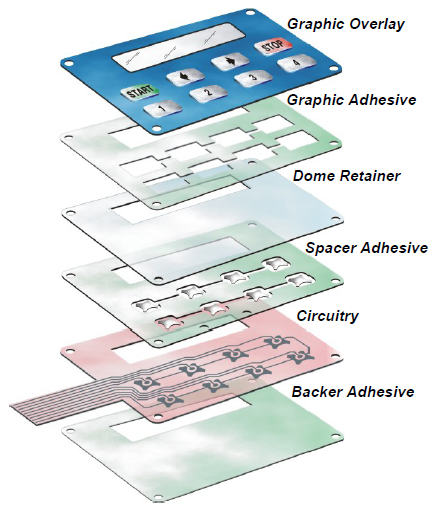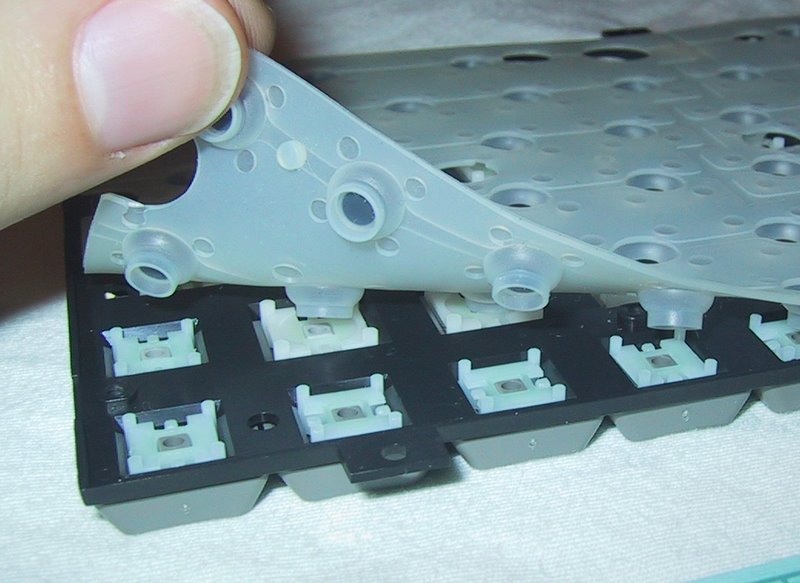Choosing the Right Membrane Switches for Your Product’s Needs
Choosing the Right Membrane Switches for Your Product’s Needs
Blog Article
Comprehending the Significance of Membrane Switches in Interface
Membrane switches are important parts in the style of efficient interface, helping with not only capability however also enhancing visual charm and individual communication. Their distinct functions, such as resistance to environmental factors and customizable styles, make them ideal for a diverse selection of applications throughout numerous markets. As we explore the future trends and various benefits connected with Membrane modern technology, it ends up being clear that these buttons are extra than simply parts; they represent a merging of advancement and usefulness. The implications of this innovation on user experience deserve checking out additionally.
What Are Membrane Switches?

The spacer layer, which has adhesive properties, permits the separation of the circuit layer from the overlay, making sure that the button remains in a non-activated state till pressed. When pressure is related to the overlay, it presses the spacer layer, connecting the gap and finishing the circuit in the underlying layer. This style not only minimizes the physical room needed for standard mechanical switches yet likewise enhances the durability of the gadget, as Membrane buttons are generally resistant to dirt, wetness, and various other environmental aspects.
Typically located in applications varying from consumer electronics to clinical tools, Membrane buttons are indispensable to contemporary innovation, supplying a reliable and user-friendly user interface that straightens with modern style requirements.
Advantages of Membrane Switches
While many switch innovations exist, Membrane Switches offer distinctive benefits that make them especially preferable in various applications. One of the key benefits of Membrane switches is their portable layout, which enables for space-saving applications in devices where property is restricted. Their thin profile not only enhances visual appeal yet also helps with lightweight building and construction.
An additional significant advantage is their resistance to ecological elements. Membrane buttons are typically sealed against moisture, dust, and contaminants, making them optimal for use sought after atmospheres, such as clinical tools and industrial tools. This toughness prolongs the lifespan of the button, reducing upkeep prices and boosting integrity.
In addition, Membrane switches can be tailored to meet certain style requirements, integrating distinct graphics and colors that boost user interaction. Their responsive comments choices can likewise be customized to give an enjoyable user experience. Additionally, Membrane switches are economical, specifically in high-volume applications, as they can be created effectively.
Applications in Numerous Industries

In the consumer electronic devices field, Membrane buttons are widespread in tools such as microwaves, washing devices, and remotes. Their responsive comments and aesthetic alternatives improve customer experience while supplying a sleek, contemporary look. In addition, automotive makers use Membrane buttons in control panel controls and infotainment systems, where room is limited, and individual engagement is crucial.
Additionally, the commercial field leverages Membrane switches in control panels for equipment and equipment, enabling intuitive operation in often severe atmospheres. Their resistance to chemicals and moisture guarantees durability and integrity in these applications. Overall, the versatility of Membrane Switches adds substantially to their prevalent use, making them vital in different technological domains.
Layout Factors To Consider for Membrane Buttons

When developing Membrane buttons, a number of key factors to consider should be taken right into account to make certain ideal capability and customer experience. Firstly, the selection of materials is critical; selecting resilient, premium substrates can boost the button's longevity and resistance to ecological variables such as dampness and temperature changes.
Second of all, the style of the graphic overlay should prioritize clearness and ease of use. Symbols and text have to be readable, and the design ought to assist in user-friendly interaction (membrane switches). Additionally, responsive feedback is necessary; integrating a responsive dome or various other devices can improve the user experience by offering physical verification of activation
Another essential variable is the button's electrical efficiency. Designers must make certain that the conductive traces are effectively made to minimize resistance and stay clear of signal disturbance. This entails analyzing the called for actuation force and ensuring compatibility with the digital elements they will user interface with.

Future Trends in Membrane Innovation
As modern technology continues to development, Membrane switches are positioned to evolve significantly, driven by technologies in materials and producing strategies. One arising fad is the incorporation of sophisticated materials, such as conductive inks and adaptable substratums, which improve toughness and reduce the general weight of Membrane buttons. These products not only boost the responsive response yet likewise enable the design of buttons that can stand up to harsher ecological problems.
Furthermore, the assimilation of touch-sensitive modern technologies is changing traditional Membrane Switches into even more interactive individual interfaces. Capacitive touch sensors embedded within Membrane switch panels can supply a more intuitive and receptive individual experience, lining up with the growing demand for streamlined, contemporary designs in consumer electronics.
In addition, advancements in printing techniques, such as electronic and 3D printing, enable fast prototyping and modification of Membrane buttons. This versatility permits suppliers to react faster to market demands and consumer choices.
Finally, sustainability is ending up being a significant focus, with makers checking out eco-friendly products and processes. As these trends unfold, the future of Membrane technology guarantees improved performance, aesthetic appeal, and ecological responsibility, solidifying their function in advanced customer interfaces throughout various markets.
Final Thought
In conclusion, Membrane Switches stand for a crucial component in the design of interface, combining performance with visual flexibility. Their advantages, including longevity and resistance to environmental factors, make them appropriate for diverse applications across various industries. In addition, thoughtful style factors to consider improve user interaction and experience. As improvements in innovation continue, the development of Membrane switches is anticipated to additional improve individual interfaces, driving innovation and their explanation enhancing functionality in a significantly intricate technological landscape.
Membrane switches are integral elements in the style of reliable user interfaces, promoting not only performance however also improving visual charm and customer communication.Membrane Switches serve as an essential component in various user interfaces, facilitating a seamless interaction between individuals and digital devices.While various switch modern technologies exist, Membrane Switches deal unique advantages that make them particularly preferable in different applications.Moreover, Membrane switches can be customized to satisfy certain layout requirements, including special graphics and colors that improve individual interaction.In verdict, Membrane Switches stand for an important element in the design of individual interfaces, combining performance with visual versatility.
Report this page